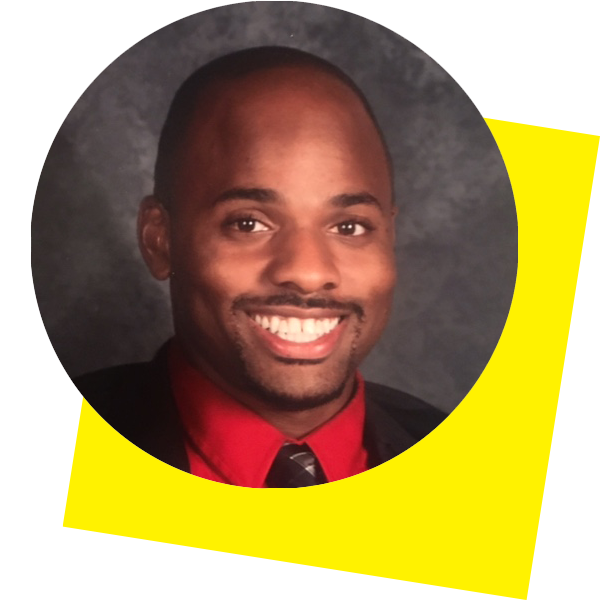This is the fifth post in a year-long blog series on teacher retention. In the prior post we discussed approaches used to improve school working conditions and teacher retention. Here we highlight lessons learned from a school that has focused on these approaches—in particular, on building positive culture and climate.
Olson Middle School in North Minneapolis has undertaken a number of ambitious initiatives the last couple of years in an effort to boost student learning, including launching an IB Middle Years Programme (MYP), a culturally responsive teaching program, and a counselor-led student reflective journaling program called “My Story, My Brilliance.”
Alongside—and as a part of—these initiatives, the school has been highly intentional in their efforts to foster a positive school culture and climate. The school’s data from the 5Essentials Survey (a University of Chicago assessment of school culture and climate, organized around five essential factors) has revealed significant improvements over the last couple years. The “Collaborative Teachers” factor moved from neutral to strong with gains in indicators of collective responsibility, school commitment, teacher-teacher trust, teacher-principal trust, and more.
Research has shown that 5Essentials data is indicative of healthy workplaces where teachers and students prosper, and has also been linked with, and is a leading indicator of, improvement in academic outcomes.
We sat down with Olson’s principal, Steve Emerson, and assistant principal, Domonique Gilmer, to discuss the lessons they’ve learned as school leaders working to foster a positive school culture where talent stays and thrives.
Q: What is the number one lesson you’ve learned as school leaders working to build a positive, trusting culture in your school?

Steve: You have to be your authentic self over time. People have to see that when you commit to something, you follow through. [We’re working on some] pretty bold initiatives… We’ve not only said here’s what the workload is going to look like, but also here’s what the support looks like. You must move at a rate people can handle, and have some success markers along the way. When that happens, people develop a trust not only of administration but they also develop trust working with each other in collaboration.

Domonique: Modeling expectations and owning it. For example, if I make a mistake, I try to apologize in front of the group. I remember one time I went back and apologized in front of the whole staff to one staff member, saying I may have come off in the wrong way. The staff member said to me later, “I really appreciated that.”
We’re pushing culturally responsive teaching as well, and one of the biggest factors in that is focusing on relationships and personal life. Before we talk about academics I ask the staff, how’s life going? How’re your kids doing? How’s your new house? That’s modeling [with staff] what we hope to see in the classroom: talking about the kid’s life before we push into academics.
Q: How do you carve out time for team building, professional development, and other activities that foster culture?
Steve: We build it into our year long schedule. Wednesday is when we have required school meetings. The first Wednesday of the month is an all-staff PD session. The second and third Wednesdays are teams doing their professional learning community collaborations.
Domonique: Also with the schedule, grade level teams are available to meet [for a common prep time] every day for 55 minutes. Plus their lunch is at the same time so sometimes they’re meeting for an hour and a half together. I’d say people do that at least four or five times a week. I hear them talking about personal life as well; the human aspect. But also planning lessons together, cross-curricular lessons.
Q: What specific activities and practices have worked to build culture?
Steve: We begin every meeting with a “warm welcome” activity. This could be a question or prompt, then people mix and mingle in groups [to answer the prompt]. Then, we always do an optimistic close.
I put our “My Story, My Brilliance” initiative up for the Minnesota principal association awards, and we received a gold star of innovation award. That was our optimistic close for yesterday: go back and tell your teams that their work is being recognized by the state principal association!
Domonique: Another thing is making sure we have teacher voice when we’re hiring new teachers, or any staff. Basically, empowering teachers… They have a say in the decisions that are happening here. They feel confident and they want to stay here because they see their words influencing what’s happening.
Q: A common theme we’ve heard is the importance of leaders holding team members in “unconditional positive regard.” How do you show staff that they are valued?
Domonique: I think we tell them. We say: we’re taking risks here because we’re transforming education, and we’re going to make mistakes. We want you to take risks.
Steve: Yes, one of the things our teachers know is that they can experiment and try things in their classroom that are innovative… Let’s try it see what happens, then let’s have a reflection session afterwards.
Also, I send out a weekly message to the staff and I usually do so some shoutouts to people who are doing great work. But I also do a lot of collective shoutouts, for example to the eighth grade team. I don’t want to create a culture where people feel “some people” are always getting their names in the email.
Q: How do you give both positive and critical feedback and hold the team to high expectations while still fostering a positive team culture?
Domonique: Three to one!
Steve: That’s right; three positives to every piece of critical feedback.

And, one of our essential agreements is to assume positive intent. When people make mistakes, we assume they are trying to do something right and it didn’t go well. You’re not getting chewed out; we just want to talk about what didn’t work well and what might work better the next time. Some people want more direct feedback; some people just like to think through things with some good coaching questioning, and to figure things out themselves.
Domonique: Yes, I see that as a person of color, I’m navigating that every time. And I’m from Louisiana, so we’re more direct, compared to Minnesota; it’s a stereotype but it seems to be true. Working with my staff of color, particularly black staff, they are more direct; they want to know what it is. But, how do I navigate the coaching piece [when] working with white staff, because I know I can be more of a direct person.
Q: What have you found works well for resolving conflict among team members?
Steve: Our “essential agreements” or norms—we usually bring people back to those. In a meeting between two teachers yesterday, I heard one remind the other, “assume positive intent.” When you bring people back to the essential agreements it registers, since those have been part of our culture now for a few years.
Domonique: We say, “Have you talked to that teacher directly, before we get involved?” I think it works out for the most part, to talk to them directly. That’s a cultural shift.
Steve: Yes, there are people here who have had different administrator experiences where it was “go tell the administrator”. Here we shift it: have you talked with so and so about the issue? Some schools have a culture of fear because the little things get written up and put in employment files. My approach is different: if it isn’t illegal, immoral, unethical, let’s work it out here at the building. We try to solve our own problems.
Q: Have you noticed other changes in your school as a result of improved culture and climate (i.e. attendance, discipline, academics, etc.)?
Steve: Yes, the quantitative data is there. Overall average daily attendance has increased. Our students attending school over 95 percent of the time has significantly increased; 17 percent higher than last year. We’ve had 25 percent fewer discipline referrals. And, our student failure rate has been cut in half; we went from 16 percent to 8 percent. We think that our “My Story, My Brilliance” initiative and efforts building culture and relationships with our staff has had significant impact.
Also, for my first three years here, staff retention was about 65 percent, which is low. Last year, our staff retention was 80 percent. We don’t know for sure what’s going to happen yet from this year to next year… but we’re anticipating about a 90 percent retention rate this year. And the people who are not returning were related to decisions we made about staffing during our budget tie-out.
Found this useful? Sign up to receive Education Evolving blog posts by email.
We are grateful to the McKnight Foundation for their generous financial support for this series.
